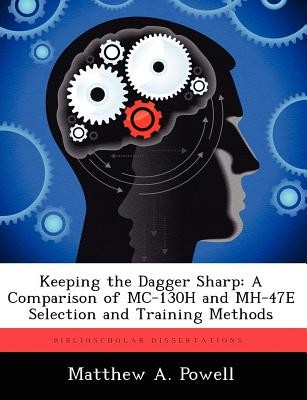
- We will send in 10–14 business days.
- Author: Matthew A Powell
- Publisher: BiblioScholar
- ISBN-10: 124937099X
- ISBN-13: 9781249370994
- Format: 18.9 x 24.6 x 0.5 cm, minkšti viršeliai
- Language: English
- SAVE -10% with code: EXTRA
Reviews
Description
Since its inception in 1990, Air Force Special Operations Command (AFSOC) has struggled to balance its roles as both a Major Command in the US Air Force (USAF) and the air component of US Special Operations Command (USSOCOM). US Code, Title 10, grants the authority to train US special operations forces to USSOCOM, however AFSOC is still required to observe USAF training rules and restrictions. This study compares the selection and training methodologies of AFSOC MC-130H aircrews and those of US Army MH-47E aircrews. It first analyzes the respective regulatory guidance and operational practices employed during assessment and selection, initial qualification training, and continuation training for each aircraft type. It then ascribes a quantitative valuing system to measure compliance with legal responsibilities. An analysis of the selection and training methodologies of baseline variants, the C-130 and CH-47, follows to highlight differences between conventional and unconventional forces. This study concludes that MC-130H selection and training has much more in common with conventional units than its unconventional counterpart, the MH-47E. In order to resolve the often conflicting responsibilities of air component of USSOCOM and USAF major command, this study then provides recommendations on how to modify MC-130H assessment and training methodologies.
EXTRA 10 % discount with code: EXTRA
The promotion ends in 21d.14:27:42
The discount code is valid when purchasing from 10 €. Discounts do not stack.
- Author: Matthew A Powell
- Publisher: BiblioScholar
- ISBN-10: 124937099X
- ISBN-13: 9781249370994
- Format: 18.9 x 24.6 x 0.5 cm, minkšti viršeliai
- Language: English English
Since its inception in 1990, Air Force Special Operations Command (AFSOC) has struggled to balance its roles as both a Major Command in the US Air Force (USAF) and the air component of US Special Operations Command (USSOCOM). US Code, Title 10, grants the authority to train US special operations forces to USSOCOM, however AFSOC is still required to observe USAF training rules and restrictions. This study compares the selection and training methodologies of AFSOC MC-130H aircrews and those of US Army MH-47E aircrews. It first analyzes the respective regulatory guidance and operational practices employed during assessment and selection, initial qualification training, and continuation training for each aircraft type. It then ascribes a quantitative valuing system to measure compliance with legal responsibilities. An analysis of the selection and training methodologies of baseline variants, the C-130 and CH-47, follows to highlight differences between conventional and unconventional forces. This study concludes that MC-130H selection and training has much more in common with conventional units than its unconventional counterpart, the MH-47E. In order to resolve the often conflicting responsibilities of air component of USSOCOM and USAF major command, this study then provides recommendations on how to modify MC-130H assessment and training methodologies.


Reviews